|
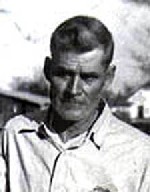
|
Stephen Cleburn Gable - Officer
Mangum Police Department June 8, 1946
About 9 p.m. on Saturday, June 8, 1946, Officer Stephen Gable arrested Egtill Buddy McKinney, Jr., 35, for public drunk near the intersection of Jefferson and Pennsylvania Streets, northeast of the courthouse square. Officer Stephen Gable was escorting Egtill McKinney to jail when McKinney struck out at Officer Gable with a knife and cut his throat on the left side, severing major arteries. Officer Stephen Gable, 50, died at the scene. Witnesses observed Egtill McKinney kick Officer Stephen Gable in the head several times as he lay dying in the street.
Stephen Gable was survived by his wife Hazel and their eight children and is buried in Riverside Cemetery, Mangum, Greer County, Oklahoma.
Egtill Buddy McKinney, Jr. was found guilty of manslaughter in February 1947 and sentenced to four years in prison.
OLEM – 4S-1-13 / 7N-2-17 NLEOM – 25W20
Updated June 3, 2024
|
|
|
|
|
|
Joe Gaines - U.S. Marshal/ Constable
U.S. Marshal Service / U.S. Indian Police August 22, 1893
On Tuesday, August 22, 1893, Deputy Marshal Joe Gaines was assisting local officers in raiding gambling joints in Pauls Valley. After several arrests, the officers went to the business of John Stevenson who was reportedly “under the influence of John Barleycorn”. When Deputy Marshal Joe Gaines tried to arrest John Stevenson, Stevenson drew a .45 caliber revolver and shot Deputy Marshal Joe Gains several times, killing him.
Deputy Marshal Joe Gaines, 32, was mourned by his wife of two weeks.
The burial site of Joe Gaines is unknown.
Two years later John Stevenson finally went to trial and was convicted of the murder of Deputy Marshal Joe Gaines and sentenced to be hanged by the Federal Court in Paris, Texas on September 13, 1895. The death sentence was appealed by John Stevenson’s lawyer, Moman Pruitt and reversed. The second trial ended in a hung jury. The third trial found John Stevenson guilty of manslaughter and sentenced him to ten years in prison. That sentence was appealed and reversed. John Stevenson was tried a fourth time and this time the jury found him innocent, and he was released from custody.
OLEM – 5N-3-21 NLEOM – 12E10
Updated June 15, 2024
|
|
|
|
|
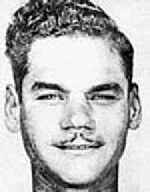
|
Reese Franklin Galyon, III – Patrolman
Oklahoma City Police Department December 22, 1960
Reese Franklin Galyon, III was born June 8, 1917, in Oklahoma City to Oklahoma City Police Captain Reese F. Galyon, II and his first wife Olive Pearl (Hicks) Galyon. Reese Galyon III served in the Navy during World War II. Reese F. Galyon, III, joined the Oklahoma City Police Department on October 1, 1947, and became a motorcycle officer.
On Saturday, December 22, 1951, Officer Reese Galyon, III, 34, was pursuing a speeding black Mercury convertible on his police motorcycle, north on Lincoln Boulevard near the State Capitol. The driver of the black Mercury crowded Officer Reese Galyon’s police motorcycle into the curb, causing the speeding motorcycle to crash at eighty miles per hour, killing Officer Reese Galyon, III. The driver of the black Mercury convertible kept going and was never identified.
Reese F. Galyon, III’s partner on December 22, 1951, was Officer H. A. McGill who had been pursuing another speeding vehicle in another direction when Galyon engaged in his fatal pursuit.
Officer Reese F. Galyon, III was survived by his second wife Lorene (Thomas) and two young sons, Reese F., IV, 12, and Justin Brent, who later also became an Oklahoma City Police Officer.
Officer Reese F. Galyon, III, is buried in Fairlawn Cemetery, Oklahoma City, Oklahoma County, Oklahoma.
Despite checking over five hundred cars fitting the description of the black convertible and citizens offering over $1,100 in rewards for the capture of the driver, the driver was never identified. Investigative leads were being checked in the case as late as 1977, twenty-six years after Officer Reese F. Galyon, III’s tragic death.
OLEM – 7N-3-25 NLEOM – 28W16
Updated December 14, 2023
|
|
|
|
|

|
Joe "Allen" Gamble - Sergeant
Oklahoma State Reformatory in Granite
Oklahoma Department of Corrections June 6, 2000
Joe “Allen” Gamble was born on the fourth of July 1971, in Dallas, Texas to Joe Allen, Sr., and Sandra (Brown) Gamble. After graduating high school Joe “Allen”, Jr. worked for the Treasure Job Corp as a firefighter. In 1996 he married Sherri and in 1997 he went to work for the Oklahoma Department of Corrections at the Granite Reformatory.
About 8:30 a.m. on Monday, June 5, 2000, Dorhee McKissick, an inmate at the Oklahoma State Reformatory in Granite, attacked Correctional Officer William Callaway and stabbed him thirteen times with a homemade knife called a “shank”. Sergeant Joe Gamble saw the assault and went to Officer William Callaway’s rescue during which Dorhee McKissick stabbed Sergeant Gamble twice in the neck. The wound severed both arteries in Sergeant Gamble’s neck. Sergeant Joe Gamble died at 9 a.m. the next morning, June 6th, at Jackson County Hospital in Altus.
Correctional Officer William Callaway survived the wounds inflicted during the attack.
Sergeant Joe “Allen” Gamble was survived by his wife, Sherri, three sons and a stepson and is buried in the Granite City Cemetery, Granite, Greer County, Oklahoma.
Inmate Dorhee McKissick was convicted of the murder of Sergeant Joe “Allen” Gamble and sentenced to life in prison without the possibility of parole. McKissick was also convicted of the assault on Correctional Officer William Callaway and sentenced to life in prison.
OLEM – 4S-2-11 NLEOM – 52W22
June 6, 2022
|
|
|
|
|
|
John Garrett - Deputy U.S. Marshal
U. S. Marshal Service July 30, 1895
John Garrett held three commissions as a peace officer in Indian Territory – he was a member of the Creek Lighthorse, the City Marshal of Okmulgee and had been issued a commission as a Deputy U.S. Marshal by Samuel Rutherford, the U.S. Marshal for the Northern District of Indian Territory in 1895.
On Tuesday, July 30, 1895, about sundown, the five members of the Rufus Buck gang were outback of Parkinson’s grocery store at Seventh and Morton Streets in Okmulgee preparing to rob it, when Deputy Marshal John Garrett exited the store by the back door and confronted the gang. Rufus Buck immediately shot Deputy Marshal Garrett in the chest and leg before Deputy Marshal Garrett could draw his gun. Deputy Marshal Garrett died moments later.
For the next two weeks the Rufus Buck gang embarked on a spree of brutal rapes, robberies, horse thefts, shootings and at least one other murder. The gang was involved in a seven-hour shootout with other Deputy U.S. Marshals, Creek Indian Police and over one hundred Creek citizens on August 10th and finally surrendered.
The burial site of Deputy Marshal John Garrett is unknown.
All five members of the Rufus Buck gang were convicted of rape and hung together on the Fort Smith gallows on July 1, 1896.
OLEM – 5N-2-25 NLEOM – 13E9
Updated June 15, 2024
|
|
|
|
|
|
Robert Stevens "Bob" Garrett - City Marshal
City of Hastings October 16, 1909
About 4 p.m. on Tuesday, February 2, 1909, City Marshal Robert Garrett along with County Commissioner Giles went to where a new road was to be laid out leading to the west edge of a new medal bridge that would cross Beaver Creek about five miles from Hastings. Part of the land for the road was on the land of F. M. Powers and had been condemned by the county for building the road.
City Marshal Robert Garrett and City Commissioner Giles were met at a gate at the site of the new road by F. M. Powers and his son Lee. The men talked for a few minutes before Lee Powers struck City Commissioner Giles in the face with his fist. Mr. Giles made a rush for Lee Powers, but Lee pulled a gun and shot at Giles missing him. City Marshal Robert Garrett pulled his gun and told the younger Powers to drop his gun. Lee Powers instead fired the gun and the bullet struck City Marshal Robert Garrett in the abdomen. Marshal Garrett then shot Lee Powers dead. City Marshal Robert Garrett recovered from his wound and later resigned as Hastings City Marshal. Robert Garrett’s wife had died a couple months before he was shot.
The afternoon of Saturday, October 16, 1909, City Marshal Robert Garrett was in Hastings when he was approached by Harvey Powers, brother of Lee Powers, and shot in the head several times in revenge for the death of his brother. A Hasting businessman named J. A. Cornellus was standing near former City Marshal Garret and was also shot and killed by a stray bullet.
Former City Marshal Robert Garrett left behind several young children and is buried in Hastings Cemetery, Hastings, Jefferson County, Oklahoma.
OLEM – 4N-3-4 NLEOM – 50W27
Updated October 11, 2023
|
|
|
|
|
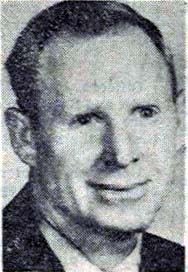
|
Garland Lee Garrison - Officer
Oklahoma City Airport Police September 19, 1979
About 8:30 a.m. on Wednesday, September 19, 1979, Officer Garland Garrison, 50, and his partner Officer Teresa Wells, 24, responded to a call of a woman with a young boy walking near the airport, throwing clothes in the street, and acting strangely. The two airport officers encountered Rita Nauni, 31, and her ten-year-old son, Raymond, in the 5400 block of South Meridian.
As Officer Garland Garrison was placing the young Raymond in the police car, Rita Nauni attacked Officer Teresa Wells and gained control of her service weapon. Rita Nauni then shot Officer Garland Garrison under the right armpit and Officer Tereasa Wells in the upper left thigh. Rita Nauni then got in the officers’ police car and drove away with her son. Rita Nauni was apprehended a short time later following a pursuit and a collision with other police cars at NW 39th and the south bound I-44 entrance ramp. Officer Garland Garrison died shortly after arriving at South Community Hospital. Officer Teresa Wells survived her wound.
Officer Garland Garrison was survived by his wife, Evva, and four children and is buried in Resthaven Gardens Cemetery, Oklahoma City, Cleveland County, Oklahoma.
Rita Nauni was convicted of first-degree manslaughter and shooting with intent to kill in 1980 and sentenced to one hundred and fifty years in prison on each charge. Rita Nauni’s conviction was overthrown in late 1987 by a federal judge due to misconduct by the prosecuting assistant district attorney. Rita Nauni pled guilty to first-degree manslaughter and assault and battery with a deadly weapon in early January 1988 before her second trial and was sentenced to two twenty-year prison terms which she was to serve at the same time. She only remained in prison a few more years with her previous time served and good behavior.
OLEM – 2N-1-8 NLEOM – 29W11
Updated September 14, 2023
|
|
|
|
|
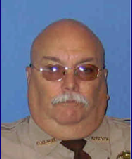
|
Gary Gene Garrison - Sergeant
Canadian County Sheriff’s Office February 1, 2014
Sergeant Gary Garrison, 64, had been with the Canadian County Sheriff’s Office for seventeen years when he suffered a fatal heart attack while on duty on Saturday, February 1, 2014.
Sergeant Gary Garrison was an Army veteran and had worked at the Federal Correction Institute in El Reno before becoming a Canadian County Deputy Sheriff.
Sergeant Gary Garrison was survived by his wife Phyllis, four children and three stepchildren.
Sergeant Gary Garrison’s earthly remains were cremated.
OLEM – 9N-1-1 NLEOM –
Updated January 18, 2024
|
|
|
|
|
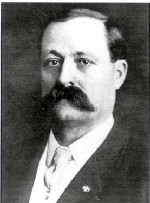
|
George Washington Garrison - Sheriff
Oklahoma County Sheriff’s Office June 5, 1908
On Friday, June 5, 1908, Sheriff George Garrison and two of his deputies, Tod Warden and M. L. Sanders, had gone to Watonga by train. They were met by Blaine County Sheriff G. A. McArthur and his deputy, M. B. Skien. From Watonga the five lawmen traveled by buggy to Hitchcock, then about three miles east to the Dobbs place in search of Alf Hunter, alias James Kingsbury, who was wanted for murder in Oklahoma County.
The lawmen soon located Alf Hunter and became involved in a running gun battle with him in a hayfield. Sheriff George Garrison was shot in the left side of the neck, severing the jugular vein, and died almost instantaneously.
Deputy M. L. Sanders and Alf Hunter were also wounded but Hunter escaped. Deputy M. L. Sanders survived his wound.
Sheriff George Garrison was survived by his wife Martha and three adult children and is buried in Fairlawn Cemetery, Oklahoma City, Oklahoma County, Oklahoma.
Alf Hunter was apprehended in Pine Bluff, Arkansas in October of 1909, returned to Watonga for trial, found guilty of the murder of Sheriff George Garrison and hanged on April 8, 1910. Alf Hunter was the only person ever legally hanged in Blaine County.
OLEM – 5N-5-20 NLEOM – 63W23
Updated May 25, 2024
|
|
|
|
|
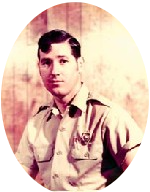
|
Melvin L. "Bucky" Garrison Jr. - Game Warden
Oklahoma Department of Wildlife Conservation December 27, 1971
Melvin L. Lewis was born February 28, 1946, in San Joaquin County, California and adopted at birth by Melvin Lee and Nancy E. Garrison.
State Game Warden Melvin Garrison, 25, left home about 4 p.m. on Monday, December 26, 1971, telling his wife, Marie, that he was going to Lake Eufaula to work duck poachers and he would be home late. When Game Warden Garrison had not returned by early the next morning a search was launched. Warden Melvin Garrison’s flashlight was found floating in shallow water in the area known as “Hoffman Bottoms”, two miles east of Hoffman. Game Warden Garrison’s body was located in the same area about 2:20 p.m. the afternoon of December 27. An autopsy indicated that Game Warden Melvin Garrison had died as a result of drowning. Subsequent investigations were unable to sustain allegations of foul play however the engraved shotgun he always carried has never been located.
State Game Warden Melvin Garrison also left behind two young daughters and is buried in Elmwood Cemetery, Wagoner, Wagoner County, Oklahoma.
OLEM – 4S-2-23 NLEOM – 24E5
Updated December 26, 2023
|
|
|
|
|
|
John Garritson - Posse, City Marshal
City of Delaware January 6, 1917
John Garritson was born in March 1885 at Pleasant View Township, Cherokee County, Kansas to John W. and Margaret S. (Kunkleman) Garritson.
The morning of Saturday, January 6, 1917, a Delaware citizen named Thornbrew had been robbed and witnessed a grocery store being burglarized. Identifying the culprits as the Poe/Hart gang, a posse of seven men was quickly organized by City Marshal Charles Bullock and included two brothers, 31-year-old Delaware merchant, John Garritson, and his brother Ed Garritson.
The posse trailed the suspects to a wooded gulch called Blue Canyon, northeast of Nowata. At the edge of the canyon the robbery suspects, members of the Poe-Hart Gang, ambushed the posse. City Marshal Charles Bullock and his posse John Garritson were shot to death and posse Ed Garritson was wounded but survived.
John Garritson was survived by his wife and is buried in Mount Washington Cemetery, Lenapah, Nowata County, Oklahoma.
Charles Bullock is also buried in Mount Washington Cemetery, Lenapah, Nowata County, Oklahoma.
OLEM – 9N-3-7 NLEOM – 10E22
Updated January 5, 2024
|
|
|
|
|

|
Albert "Creel" Gaston - Sheriff
Woodward County Sheriff’s Office February 12, 1986
Shortly after 2:30 p.m. on January 6, 1982, Sheriff Albert “Creel” Gaston was investigating a report of someone stealing gasoline from parked cars in rural Woodward County. Near the intersection of Highways 270 and 34, Sheriff Gaston saw a car parked at the side of the road that fit the description of the suspect vehicle in the thefts. As Sheriff Gaston approached the car, the driver, David M. Behrens, 23, shot him once in the chest with a .38 caliber pistol. The bullet penetrated one lung and lodged against Sheriff Gaston’s spine, paralyzing him from the waist down. After many months in the hospital Sheriff Albert Gaston recovered enough to complete the last two years of his term confined to a wheelchair.
David Behrens was convicted of shooting of Sheriff Gaston and sentenced to one hundred and forty-four years in prison.
Sheriff Albert Gaston suffered long term complications from his wound and died Wednesday, February 12, 1986, from pneumonia following surgery earlier in January for an infection.
Sheriff Albert “Creel” Gaston was seventy years old at the time of his death and was survived by his wife, Maxine.
Albert Gaston is buried in North Persimmon Cemetery, Sharon, Woodward County, Oklahoma.
OLEM – 2N-2-13 NLEOM – 44W17
Updated February 6, 2024
|
|
|
|
|
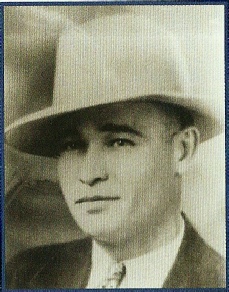
|
Douglas W. Gates - Detective
Oklahoma City Police Department December 3, 1933
On the morning of Sunday, December 3, 1933, Detective Douglas Gates, 23, and his partner, Detective Webb Campbell, became involved in a pursuit with a stolen car near the State Capitol. The stolen car stopped a few blocks west at NW 23rd Street and N. Robinson Street. As the two officers approached the stolen car, the driver, Ernest Oglesby, fired at the officers through the car’s rear window and started to drive off. Detective Webb Campbell, a former University of Oklahoma football player, jumped on the car’s rear bumper and began exchanging shots with Ernest Oglesby with Detective Douglas Gates starting to follow in the police unit. Ernest Oglesby wreaked the stolen car before clearing the intersection, throwing Detective Webb Campbell clear of the wreckage with glass in his eyes. Ernest Oglesby then shot Detective Douglas Gates twice as he approached the stolen car then ran off. Detective Douglas Gates died later that day.
Detective Douglas Gates’ younger brother Patrolman John “Jack” Gates was killed in the line of duty three years earlier.
Detective Douglas Gates is buried in the Fort Cobb Cemetery, Fort Cobb, Caddo County, Oklahoma, next to his brother John.
Ernest Oglesby was arrested a few hours later, convicted of Detective Douglas Gates’ murder and died in Oklahoma’s electric chair on January 4, 1935.
Detective Webb Campbell died in the line of duty five years after his partner Douglas Gates’ death.
OLEM – 8S-5-19 NLEOM – 46E5
Updated June 15, 2024
|
|
|
|
|
.jpg)
|
John D. "Jack" Gates - Patrolman
Oklahoma City Police Department March 23, 1930
On Saturday, March 22, 1930, three weeks after joining the police department, Patrolman John “Jack” Gates was assigned inside the Clarence Saunders store at 1412 North Robinson to guard against armed robberies as the store was robbed the month before and the manager was shot.
About 9 p.m. two armed men robbed the store. As Officer John Gates stepped out to try to stop the robbery, one of the robbers shot Officer Gates three times with a .32 caliber automatic pistol, wounding Officer John Gates in both arms and chest, just above the heart. Officer John Gates was immediately taken across the street to the Polyclinic Hospital. In spite of being so close to medical attention the 26-year-old Officer John Gates died at 5:35 p.m. the next day, Sunday, March 23rd.
The armed robbers, H. D. Bradbury, and Charlie Points, were later arrested, convicted and sentenced to life in prison.
Jack Gates’ older brother, Douglas, also died in the line of duty as an Oklahoma City Police Officer three years later.
The Douglas brothers are buried in Fort Cobb Cemetery, Fort Cobb, Caddo County, Oklahoma.
OLEM – 7N-1-10 NLEOM – 53W13
Updated February 17, 2024
|
|
|
|
|
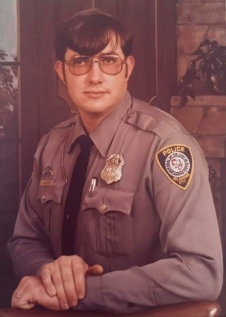
|
John Arthur George – Officer
Oklahoma City Police Department February 8, 1981
John A. George graduated from Choctaw High School in May 1972. In October of 1973 John A. George joined the Oklahoma City Police Department as a Community Service Officer (CSO) and served as a CSO until he was sworn in as an Oklahoma City Police Officer in August 1975.
In March of 1980 John A. George received the police departments Life Saving Award for dashing into a burning home on January 17, 1980, and rescuing a man who most certainly would have died had it not been for the actions of Officer John A. George.
Officer John A. George also served as a member of the Oklahoma City Police Department’s Honor Guard unit.
Officer John A. George had gotten off duty from the Patrol Division’s Four Shift at 2 a.m. the morning of Wednesday, February 18, 1981, and arrived home at his home in Choctaw about 2:30 a.m. and went to bed. He arose several hours later and rode his motorcycle to Central State University in Edmond to attend his accounting class. Officer George got out of class after 10 a.m. that morning and started home on his motorcycle. Officer John A. George was acting Honor Guard Commander for the Honor Guard detail that would attend the funeral of a retired Oklahoma City Police Officer a few hours later that morning and was on his way home to change into his Honor Guard uniform. About 11 a.m. while still enroute home Officer George was east bound in the outside lane of NE 36th Street crossing the North Canadian River Bridge just east of N. Sooner Road behind a car going the same direction. Suddenly the car swerved to the left to avoid an Oklahoma City dump truck that was parked in the outside lane as workmen were repairing the road in front of the truck. It appears that at the speed he was traveling Officer George did not have time to react to the sudden appearance of the parked city dump truck colliding with the back of the truck. Officer George was transported to the hospital with massive head injuries and died there about 2 p.m. that afternoon.
Officer John A. George’s wife Linda was four months pregnant and working in the police department’s Information Communications Unit (ICU) when the accident occurred. Their daughter Jennifer Melissa was born five months later in July.
The police department and the city recognized the death of Officer John A. George as a line of duty death as he was on “special assignment” as Honor Guard Commander at the time of the accident.
Officer John A. George is buried in Elmwood Cemetery, Choctaw, Oklahoma County, Oklahoma.
OLEM – 10S-1-19 NLEOM –
Updated June 15, 2024
|
|
|
|
|
|
James H. Gibson - Night City Marshal
City of Dewey May 5, 1915
About 2 a.m. on Tuesday, April 27, 1915, Night City Marshal James Gibson tried to arrest Nathan Bozarth, an oil field teamster, who was drunk and holding a crowd at bay with his gun after shooting one man. When City Marshal James Gibson approached Nathan Bozarth, he was shot in the chest and abdomen by Bozarth. Nathan Bozarth was later cornered in a livery barn by a deputy sheriff and committed suicide before he could be arrested.
Night City Marshal James Gibson, 40, died from his wounds the afternoon of Wednesday, May 5th in a Bartlesville hospital.
James Gibson was a full blood Delaware Indian and had previously served as the postmaster at Copan, a detective for the MK&T Railroad and a Deputy U.S. Marshal.
James Gibson is buried in Delaware Indian Cemetery, Dewey, Washington County, Oklahoma.
OLEM – 5N-5-14 NLEOM – 18E20
Updated April 26, 2024
|
|
|
|
|
|
James P. Gibson - Deputy Sheriff
Nowata County Sheriff's Office September 29, 1916
Shortly after noon on Friday, September 29, 1916, two prisoners, Mark Foreman and Sonny Powell, attacked Sheriff James Mayes in the Nowata County jail to escape. As Deputy Sheriff James Gibson ran to assist the sheriff, Mark Foreman got control of Sheriff James Gibson’s gun and fatally shot Deputy Sheriff James Gibson. Taking the dead deputy’s gun, the pair then escaped. Mark Foreman and Sony Powell were arrested less than three hours later that afternoon.
At 8:30 p.m. that night a large mob of citizens broke the pair out of jail and lynched them. Sonny Powell was hanged from a tree across the street from the county courthouse and Mark Foreman was hanged from a nearby light post.
Deputy James Gibson was survived by his wife Sophronia and their four children and is buried in Nowata Memorial Cemetery, Nowata, Nowata County, Oklahoma.
OLEM – 3S-2-11 NLEOM – 23W20
Updated June 15, 2024
|
|
|
|
|

|
W. Jacob "Jake" Giles - Sheriff
Jefferson County (Texas) Sheriff’s Office March 24, 1916
On Friday, March 24, 1916, Sheriff “Jake” Giles was transporting Paul V. Hadley, 30, by train back to Beaumont, Texas from Kansas City, Missouri, on a warrant for assault with intent to kill. Also traveling with the men was Paul Hadley’s 22-year-old wife, Ida. Sheriff Giles had known the couple for several years and trusted them and therefore had not handcuffed Paul or searched Ida. Just before the train entered Checotah, Oklahoma, Ida Hadley retrieved a pistol she had apparently hidden in the women’s bathroom previously. Walking up behind Sheriff Giles, Ida Hadley shot him fatally once in the head. Paul Hadley took the dead sheriff’s gun, forced the train to stop and the pair got off in Checotah.
Sheriff W. Jacob “Jake” Giles left behind his wife Emley and nine children, ages 4 to 19 and is buried in Magnolia Cemetery, Beaumont, Jefferson County, Texas.
The Hadleys were both arrested the next night near Texanna. Paul Hadley was convicted and sentenced to life in prison and Ida was found not guilty by reason of insanity. The day after her trial ended, Ida pled guilty to attempting to aid her husband’s escape and was sentenced to ten years in prison.
A few years later Paul Hadley was granted a sixty-day leave of absence from prison and never returned. In November 1921 Paul Hadley was arrested in Yuma, Arizona for armed robbery and murder. Paul Hadley was convicted of both crimes and was hung by the state of Arizona on April 13, 1923.
OLEM – 8S-1-10 NLEOM – 58W15
Updated February 17, 2024
|
|
|
|
|
|
James Walter Gillard – Assistant Chief of Police
Holdenville Police Department May 16, 1910
Soon after midnight on May 16, 1910, Assistant Chief James Gillard called Chief of Police Roberts to come on duty with him because “there might be some trouble.” Assistant Gillard had been invited by a man named John Bruce to come to a hotel room where a group was having a small social gathering and having a few drinks. When Assistant Chief Gillard went to the room Hughes County Sheriff James K. King was there. Sheriff King had been drinking and the tension between the two men immediately evident. Someone offered James Gillard a drink and he declined. Sheriff King left soon afterwards, and James Gillard left after him. John Bruce was following Gillard down the stairs when Gillard told him he might want to” stay behind because bullets may be flying down here.” Witnesses found the two officers embroiled in an argument at the foot of the stairs. Both men pulled their guns but were separated by the witnesses before shots were fired by either man.
Sometime later, Chief Roberts and James Gillard were walking in front of the American National Bank when they came upon Sheriff King and John Bruce. James Gillard and Sheriff King began having words again and both men went for their guns. Chief Roberts grabbed Sheriff King and John Bruce grabbed Gillard, restraining both men. Statements later indicated that, while both men were still being restrained by Roberts and Bruce, Gillard had holstered his gun when Sheriff King reached around Roberts and shot James Gillard once. The bullet entered Gillard’s right cheek and penetrated his brain killing him instantly.
James Gillard was survived by his wife Margarette “Maggie” and their six children, Jessie H. and Jasper H., 15, Silvester, 13, Louis, 8, Norman, 5, and Lola, 2.
James Gillard is buried in Holdenville Cemetery, Holdenville, Hughes County, Oklhoma.
Later news accounts made note of the ill feeling and “bad blood” that existed between James Gillard and James King for some time but failed to explain the origin of the feelings between the two lawmen.
Sheriff James King was arrested and spent the night in his own jail before being released on $15,000 bond. King was tried for murder the first week of July and defended by Attorney Moman Prueitt. The trial ended in a hung jury.
OLEM – 1N-2-19 (John Gillard)
Updated June 18, 2024
|
|
|
|
|

|
Isaac Lincoln "Ike" Gilstrap - Deputy U.S. Marshal
U. S. Marshal Service March 12, 1906
On Monday, March 12, 1906, Deputy Marshal Isaac Gilstrap was leading a posse in pursuit of Charley Wickliffe and his gang, which included his brothers John and Tom, on Little Sabine Creek, twenty-five miles southeast of Vinita. About 4 p.m. that afternoon the Wickliffes ambushed the posse. Deputy Marshal Isaac Gilstrap was shot in the head and killed and one other member of the posse, Richard “Dick” Terry, was wounded but survived. The posse retreated for reinforcements. When the posse returned, the gang had escaped. Upon checking Deputy Marshal Isaac Gilstrap’s body, it appeared that in addition to his initial head wound, one of the gang members had stood over his prostrate body and fired another shot into one of his eyes.
Deputy Marshal Isaac Gilstrap was survived by his wife and several daughters and is buried in Fairview Cemetery, Vinita, Craig County, Oklahoma.
OLEM – 5N-4-11 NLEOM – 3E10
Updated March 8, 2024
|
|
|
|
|
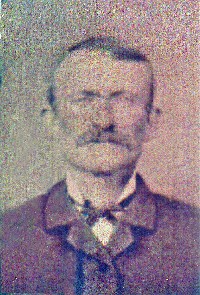
|
Herbert Melvin Goddard - Deputy U.S. Marshal
U. S. Marshal Service August 14, 1900
Herbert Goddard was born in Hartford, Sebastian County, Arkansas on December 14, 1859. After completing his training as a medical doctor as a young man Herbert Goddard moved to Little River, Arkansas where he met Mary Strawn, who he would marry.
Herbert and Mary Goddard moved to South McAlester in the Choctaw Nation where Herbert set up a medical practice. Herbert also assisted several of the deputy U.S. marshals as a posse. Herbert soon gave up his medical practice and became a full-time posse for several deputies. On July 8, 1899, Herbert Goddard was appointed a deputy U.S. Marshal by U.S. Marshal Grady of the Central District of Indian Territory.
In early August 1900 Deputy Marshal Herbert Goddard was given an arrest warrant for a twenty-year-old full blood Choctaw Indian named Ambrose “Ombus” Wilson who was known to live near Goodwater, located east of Idabel and near the Arkansas border. Sometime on Monday, August 13, 1900, Deputy Marshal Herbert Goddard, and his two-posse named Fisher and Thompson attempted to arrest Ambrose “Ombus” Wilson, three miles south of Goodwater in what is now McCurtain County.
When the officers announced they had a warrant for him, Wilson opened fire. Ambrose Wilson wounded all three officers. Deputy Marshal Herbert Goddard was able to return fire with his shotgun hitting Ambrose Wilson nine times with buckshot breaking one of his arms before Wilson escaped.
Deputy Marshal Herbert Goddard died the next day, August 14th in Goodwater. Both of his posse survived their wounds.
Ambrose Wilson was arrested a week later from under his uncle’s house where he had been hiding and taken to South McAlester where his serious wounds were treated. There is no further record of Ambrose Wilson either showing he died in jail or was ever tried.
Deputy Marshal Herbert Goddard was survived by his wife Mary Emma and their four young children, Cora 11, Columbus 9, Herbert 6, and William 3, and is buried in Cooper Cemetery, Little River County, Arkansas.
OLEM – 9S-2-1 NLEOM – 22W27
Updated August 14, 2023
|
|
|
|
|
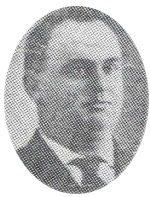
|
Fred C. Godfrey - Day Sergeant
Oklahoma State Penitentiary
Oklahoma Department of Corrections January 19, 1914
Day Sergeant Fred Godfrey was one of seven people killed during a prison escape about 4:20 p.m. on Monday, January 19, 1914, at the Oklahoma State Penitentiary (OSP) in McAlester.
Three escaping convicts, Tom Lane, Chiney Reed and Charles Kuntz became involved in a gun battle with Deputy Warden David Oates near his office just as Bertillon Officer Herman H. Drover, 49, was coming out of his office and was killed by gunfire from convict Tom Lane.
Deputy Warden David Oates, 44, ran down the hall for more guns and ammunition. The convicts then burst into Oates’ office and confronted stenographer Mary Foster, Day Sergeant Fred C. Godfrey, Parole Officer Frank Rice and attorney John R. Thomas. The convicts ordered everyone to raise their hands. The elderly attorney John Thomas moved too slowly for them so Tom Lane fatally shot him.
Day Sergeant Fred Godfrey, 38, then attacked Tom Lane. Tom Lane shot Sergeant Fred Godfrey in the head, killing him instantly.
The convicts then took Miss Foster and Parole Officer Frank Rice as protection and hostages and moved back into the hallway where Deputy Warden David Oates met them with a shotgun. Deputy Warden David Oates ordered Tom Lane to drop his gun, but Lane shot and killed Deputy Warden David Oates.
The group then moved outside and got into a buggy. They started across the prison farm field. R. J. Richie, keeper of the prison’s bloodhounds, pursued the group, caught up to them and was able to shoot and kill the three convicts.
Fred Godfrey was survived by his wife Jessie and son Fredrick Homer, 2, and is buried in Rosemound Cemetery, Medford, Grant County, Oklahoma.
OLEM – 8S-1-9 NLEOM – 43E22
Updated January 16, 2024
|
|
|
|
|
|
Emmett F. Goodwin - Chief of Police
Chickasha Police Department February 1, 1909
About 9 p.m. on Monday, February 1, 1909, Chief Emmett Goodwin, 45, and his brother-in-law, Officer Joe Earl, were walking down Chickasha Avenue. In front of People’s Store the two officers met Night Chief of Police Bill Thomas. The discussion soon turned to some critical statements that Bill Thomas had made about “the town running wide open”, indicating it was Chief Emmitt Goodwin’s fault. Chief Goodwin told Bill Thomas that he had as much authority to correct the situation as Goodwin did. Bill Thomas immediately drew his .38 caliber automatic pistol and shot Chief Emmett Goodwin three times in the head, one of the bullets penetrating his brain, killing him.
Officer Joe Earl and Chief Bill Thomas then began exchanging shots. Officer Earl was wounded three times but survived. Chief Thomas was not injured and surrendered himself at the police station and was charged with Chief Goodwin’s murder.
Chief Emmet Goodwin was survived by his wife Flora and their seven children and was buried in Fairview Park in Chickasha. Sometime later Emmitt Goodwin’s body was moved to Rose Hill Cemetery, Chickasha, Grady County, Oklahoma where his grave site remained unmarked until May 18, 2023.
OLEM – 5N-5-8 NLEOM – 60W24
Updated January 18, 2024
|
|
|
|
|
|
Franklin Walter "Watt" Goss - Constable
City of Chouteau May 9, 1957
About 11 a.m. on Thursday, May 9, 1957, Constable Franklin Goss had Justice of the Peace Will C. Rector riding with him in his patrol unit when they were involved in a traffic accident near Pryor with a south-bound MK&T Railroad train which had just passed through Pryor fifteen minutes earlier. Both men died from their injuries.
Constable Franklin “Watt” Goss was survived by his wife Dora and daughter Vinnie and is buried in IOOF Cemetery, Hulbert, Cherokee County, Oklahoma.
OLEM – 10N-3-3 NLEOM – 63W9
Updated May 6, 2024
|
|
|
|
|
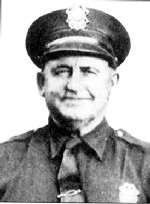
|
Irvin Burgin Gossett - Chief of Police
Duncan Police Department October 7, 1939
Just after midnight on Tuesday, May 13, 1930, Stephens County Sheriff Waldo A. Williams, Undersheriff Ed Sumrill, Duncan Chief Irvin Gossett, Assistant Chief Charles Coker, and Night Policeman W. F. McKinzey had stopped a black Buick that “looked brand new” south bound on Highway 81 about four miles north of Duncan. The lawmen were looking for a Buick of this description containing four men wanted in connection with several armed robberies in the area in recent months including one at a service station in Lawton a few hours before.
The men in the Buick were the Cunningham brothers, Forrest “Doc”, 27, John B., 25, Emanuel “Skinny”, 23, and Jess “Jake”, 18. As the officers approached the Buick and its occupants were getting out, a gunfight broke out. When it was over Sheriff Waldo Williams was wounded in the stomach, chest, and leg, and died at 2:30 p.m. that afternoon. Chief Irvin Gossett was wounded in the stomach.
Of the Cunningham brothers, Forrest Cunningham was dead, John was wounded in the arm and stomach, Emanuel was shot in the spine and paralyzed for life and Jess had escaped. Jess Cunningham was captured later in Colorado and all three surviving brothers pled guilty to the Sheriff’ Waldo William’s murder and were given life sentences.
Chief Irvin Gossett was given a direct blood transfusion and eventually recovered enough to return to work, but he was never well and died Saturday, October 7, 1939, from the effects of his gunshot wound.
Chief Irvin Gossett was survived by his wife, Angie, and two sons and is buried in Duncan Municipal Cemetery, Duncan, Stephens County, Oklahoma.
OLEM – 7N-2-25 NLEOM – 63E22
Updated June 15, 2024
|
|
|
|
|
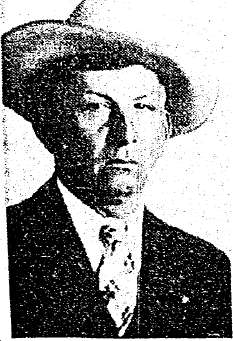
|
Osceola Rattling “Osie” Gourd - Deputy Sheriff
Cherokee County Sheriff’s Office May 12, 1938
Shortly after 5 p.m. on Thursday, May 12, 1938, Deputy “Osie” Gourd and two other deputies located escaped convicts A. L. Whitham and Clovis Montgomery, in a combination café/dance hall in Camp Cook, five miles north of Tahlequah. The pair of convicts was also wanted for a recent armed robbery in Walking Stick Spring. As the three Deputy Sheriffs approached the convicts, A. L. Whitham opened fire on Deputy Sheriff “Osie” Gourd without warning, shooting Gourd in the stomach. Deputy Sheriff Gourd then shot convict A. L. Whitham five times with his Winchester rifle before Deputy Sheriff Gourd fell dead.
When he tried to flee convict A. L. Whitham was shot again by one of the other deputies. Convict A. L. Whitham also died at the scene.
Deputy Sheriff “Osie” Gourd was survived by his wife Jessie and five children and is buried in Moodys Cemetery, Moodys, Cherokee County, Oklahoma.
OLEM – 1N-1-8 NLEOM – 23E19
Updated May 6, 2024
|
|
|
|
|
|
James Boley Grady - Posse, Deputy U.S. Marshal
U. S. Marshal Service July 17, 1898
Leonidas Sengel Hill was born January 5, 1855, in Walker County, Georgia to James Madison Hill and his wife.
James Boley Grady was born May 13, 1869, at Van Buren, Crawford County, Arkansas to Jasper Porch and Euphremia (Latham) Grady.
James Boley Grady was serving as a Posse for Deputy U.S. Marshal Leonidas S. Hill who was serving under James’ father, U.S. Marshal Jasper P. Grady, Marshal for the Central District of Indian Territory.
On Sunday, July 17, 1898, Deputy U. S. Marshal Leonidas S. Hill, 43, and his posse James B. Grady, 29, were in Jenson near the Arkansas state line in the Choctaw Nation attempting to serve an arrest warrant on nineteen-year-old Floyd Simpson for disturbing a religious meeting. The lawmen located Floyd Simpson. Posse James B. Grady wrestled Floyd Simpson to the ground after Grady struck the young Simpson in the head with the butt of his Colt .45 caliber revolver when Simpson resisted arrest. Floyd Simpson’s father, W. Jasper Simpson witnessed the fight and went up to Posse James B. Grady, pulled Grady’s gun from his holster and shot Posse Grady in the neck killing him. When Deputy Marshal Leonidas Hill approached, and the elder Simpson shot Deputy Marshal Hill in the chest and Hill died within an hour.
The Simpson’s then escaped going out of town in different directions.
James B. Grady was survived by his wife Ursula (Reed) and is buried in Oak Hill Memorial Park, McAlester, Pittsburg County, Oklahoma.
Floyd Simpson rode to Hackett City, Arkansas and surrendered to the Constable there. On July 28th bond was set at five- thousand- dollars for Floyd Simpson, who could not make bail.
Weeks passed and the trail of Jasper Simpson grew cold.
On October 6, 1898, a grand jury met and issued true bills charging both Simpsons with the murder of both lawmen.
Jasper Simpson continued to elude arrest for more than two years, until April 1901, when he was arrested in Arkansas. Since Jasper Simpson had contracted smallpox, he was placed in a dug out away from the other prisoners. Shortly thereafter Jasper Simpson escaped jail.
The trial of Floyd Simpson was conducted in April 1899. The jury found him not guilty on both murder charges and he was released.
In early January 1904, Jasper Simpson was arrested near Marlow. The legal maneuvers flourished as the defense attorneys filed one motion after another. Close to six years had elapsed since Deputy U.S. Marshal Leonidas S. Hill and his Posse J. Boley Grady had been murdered.
On May 4, 1904, the defense presented a motion to quash the indictment. A federal judge dismissed the case and Jasper Simpson went free.
OLEM – 5N-5-3 NLEOM – 48W16
Updated June 15, 2024
|
|
|
|
|

|
Jefferson Davis "J.D." Graham - City Marshal
City of Temple April 27, 1929
About 9:30 p.m. on Saturday, April 27, 1929, City Marshal Jefferson Graham, 63, removed drunk flour mill worker Harry Adair from a Temple pool hall and ordered him to go home. A short time later Harry Adair returned with a 12-gauge shotgun and confronted City Marshal Jefferson Graham in the street. City Marshal Graham again told Adair to go home and sleep it off. Marshal Jefferson Graham turned to walk away when Harry Adair fired the shotgun. The blast fired from less than six feet away struck the popular City Marshal in the back of the head, killing him instantly.
City Marshal Jefferson D. Graham was survived by his wife of forty-four years, Fannie and their ten children.
Jefferson Graham is buried in Temple Masonic Cemetery, Temple, Cotton County, Oklahoma.
Harry Adair was convicted of City Marshal Jefferson Graham’s murder and sentenced to forty years in prison but while out on appeal was shot and killed by City Marshal Jefferson Graham’s son, Jim.
Jim Graham was later acquitted of Harry Adair’s murder.
OLEM – 4S-2-10 NLEOM – 46E21
Updated April 22, 2024
|
|
|
|
|
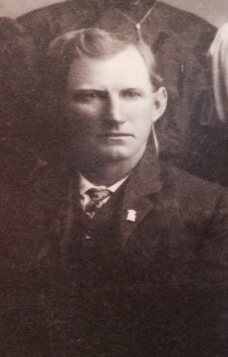
|
Albert Graves - Chief of Police
Custer City Police Department July 31, 1928
Albert Graves came to the Indian Territory with his father Phillip in 1892 during the Oklahoma Land Run. Phillip Graves rode his horse until he was so tired that he fell off. That is where Phillip staked his one-hundred-and-sixty-acre claim, which is now the NW corner of Main Street and US Highway 33 in Custer City. The Graves founded the town of Graves, Indian Territory, which later became known as Custer City, fourteen miles NW of Weatherford.
About 1 a.m. on Tuesday, July 31, 1928, Chief of Police Albert Graves, 57, was called to the home of Buzz and Ella Wilson on a family quarrel.
Buzz Wilson had already left prior to Chief Albert Graves’s arrival. Ella Wilson was armed and waiting behind a hedge when Chief Graves arrived. Thinking it was her husband coming back to take the family car, Ella Wilson opened fire on Chief Albert Graves killing him. Before he died, Chief Albert Graves was able to return four shots of which one struck Ella Wilson in the leg.
Chief Albert Graves was survived by his wife Mary, a son and four daughters and is buried in the Masonic Cemetery, Custer City, Custer County, Oklahoma. The Masonic Cemetery is in the one-hundred-and-sixty-acre section that Phillip Graves homesteaded.
Ella Wilson was tried three times before being found guilty of killing Chief Albert Graves but only served one year of her seven-year prison sentence.
OLEM – 2N-2-25 NLEOM – 47W14
Updated June 15, 2024
|
|
|
|
|

|
Nathan Bradford Graves - Officer
Sac and Fox Nation Tribal Police Department January 24, 2017
About 6 a.m. the morning of Tuesday, January 24, 2017, Officer Nathan Graves, 45, was on duty and driving southbound on Highway 99, eleven miles north of Stroud, near the Lincoln and Payne County line when a northbound vehicle, driven by Justin Henley, went left of center to pass another vehicle and struck Officer Nathan Graves’ patrol vehicle head on. Officer Nathan Graves died at the scene.
Nathan Graves also worked with the Lincoln County Sheriff’s Office and had previously served with the Stroud and OU Health and Science Center Police Departments. Nathan Graves served with the Sac and Fox Nation for two and a half years.
Nathan Graves was survived by his wife Janet and their four children and is buried in Sunnylane Cemetery, Del City, Oklahoma County, Oklahoma.
Justin Henley plead “Guilty” to Second Degree Manslaughter after his trial ended in a hung jury and received a sentence of two years in prison.
OLEM – 10N-1-15 NLEOM – 64E30
Updated January 18, 2024
|
|
|
|
|

|
George Calvin Green, Jr. - Captain
Oklahoma Highway Patrol October 26, 2010
Captain George Green, 56, was involved in an on-duty accident involving a dump truck just off the Turner Turnpike near Sapulpa on Monday afternoon October 25th, 2010. Captain George Green's view was blocked by a truck-trailer and he unknowingly turned his highway patrol car into the path of an oncoming dump truck. Captain George Green suffered multiple injuries and died from his injuries the following afternoon about 3:30 p.m. He was to have retired in six months.
Captain George Green was survived by his wife Susan, adult sons Patrick and John and their families.
Captain George Green’s earthly remains were cremated.
OLEM – 9S-3-1 NLEOM – 32E27
Updated October 19, 2023
|
|
|
|
|
|
John Green - Deputy Sheriff
Creek Nation, Indian Territory December 25, 1878
Deputy Sheriff John Green was killed Sunday, December 25, 1878, by another Creek Indian named Yahola north of Muskogee. Yahola was later arrested, convicted, and executed by shooting in Eufaula. Under Creek law, the condemned man could pick his own executioner. Yahola picked Deputy Sheriff Joe Riley, a deputy under Sheriff Richard Berryhill, to be his executioner.
The burial site of Deputy Sheriff John Green is not known.
OLEM – 5N-4-19 NLEOM – 51E18
Updated December 15, 2023
|
|
|
|
|
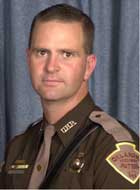
|
Nikky Joe Green -State Trooper
Oklahoma Highway Patrol December 26, 2003
Nikky Joe Green joined the Oklahoma Highway Patrol in 1997.
About 6:30 a.m. Friday, December 26, 2003, Trooper Nikky Joe Green, 35, was awakened at his home by the local rural Cotton County newspaper delivery lady. The woman advised Trooper Green that she had just observed a white vehicle parked on the side of the road on Booher Road, a dirt road about a mile from Trooper Green’s residence east of Devol, and about five miles north of the Texas state line. The lady advised that a white male was lying motionless in the front seat of the white car with his feet hanging out. She feared he was dead.
Trooper Green telephoned Oklahoma Highway Patrol (OHP) dispatch in Lawton and advised them what the lady had told him. Trooper Green was not scheduled to go on duty until 9 a.m. that morning, but when he learned that the on-duty Cotton County Trooper was unavailable, he volunteered to go checkout the situation himself.
Trooper Nicky Joe Green went on duty at 6:37 a.m. and informed dispatch shortly thereafter that he had arrived on the scene of the four-door white car and white male.
Trooper Green attempted to provide the car’s tag number but dispatch could not understand the number, due to radio interference. That was Trooper Green’s final contact with OHP. Trooper Green apparently observed that someone had been manufacturing methamphetamine outside of the car. Trooper Green attempted to arrest the sleeping white male, Ricky Ray Malone, and was able to get a hand cuff on Malone’s right wrist before a violent struggle ensued during which Trooper Nikky Joe Green lost control of his 9 mm service weapon. Ricky Malone was able to get control of Trooper Green’s weapon and forced Trooper Green to lay face down in the ditch beside the road. Despite Trooper Green’s pleas not to shoot him Ricky Malone shot Trooper Green in the back of the head killing him. During the struggle Trooper Green’s dash cam was activated and though it did not capture the struggle in the ditch it recorded the audio.
Ricky Malone gathered up the meth lab items before driving away.
Trooper Nikky Joe Green was survived by his wife Linda and three young daughters, Cortni, Brooklyn, and Morgyn and is buried in the Fairview Cemetery, Randlett, Cotton County, Oklahoma.
Ricky Ray Malone was later arrested, convicted, and sentenced to death for the first-degree murder of Trooper Nikky Joe Green.
OLEM – 4S-3-8 NLEOM – 59E23
Updated June 15, 2024
|
|
|
|
|

|
Hubert Gerald “Hugh” Greer– Sergeant
Tulsa Police Department April 27, 1962
Shortly after midnight on Friday, April 27, 1962, Sergeant Hubert Greer and his partner, Corporal Ray Burch, responded to a possible burglary in progress call at the rear of the Safeway grocery store at 17th Street and South Boston Avenue. As the officers approached two men at the back door of the store the men began running through the adjoining residential area. The officers caught the men in the rear of 1725 South Baltimore Avenue at which time one of the men, Joe Allen Johnson, 23, grabbed Sergeant Hubert Greer’s gun and emptied it at both officers. Sergeant Hubert Greer was hit twice in the upper right chest and Officer Ray Burch was shot in the mouth. Officer Burch then shot Joe Johnson in the chest. Sergeant Hubert Greer, 37, died an hour later in the hospital. Officer Ray Burch survived his wound.
Joe Allen Johnson was arrested a block from the scene and the second man, Dennis Lee McGinnis, 21, was arrested eight hours later. Both men were charged with Sergeant Hubert Greer’s murder.
Hubert Greer had been on the police department ten years and left behind his wife of twenty years, Abbie, a son and two daughters.
Sergeant Hubert Greer is buried in Memorial Park Cemetery, Tulsa, Tulsa County, Oklahoma.
OLEM – 7N-5-16 NLEOM – 38W8
Updated April 22, 2024
|
|
|
|
|
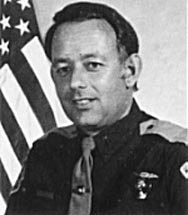
|
James Pat Grimes - Second Lieutenant
Oklahoma Highway Patrol May 26, 1978
On Friday morning, May 26, 1978, the nationwide search for two escaped Oklahoma convicts, Claude Eugene Dennis, 35, and Michael Charles Lancaster, 25, centered around Lake Texhoma. The pair had escaped from the Oklahoma State Penitentiary in McAlester thirty-four days earlier. Since then, the pair had engaged in a crime spree that covered one-thousand miles from Oklahoma to Alabama and included seven murders. They also had wounded a police officer in Alabama. Oklahoma Highway Patrol (OHP) Troopers were sent from all over Oklahoma to assist in the search.
That morning a farmer in Kenefic reported that two heavily armed men tied him up and stole his pickup truck. The description of the pickup was broadcast to all units in the area.
OHP Troopers Houston F. “Pappy” Summers, 62, and Billy Gene Young, 50, located the pickup on Highway 48 eight miles north of Durant and pursued it north to near Kenefic. The stolen pickup finally pulled over to the side of the road. As the state troopers’ patrol unit came to a stop behind the pickup the two convicts stepped out and opened fire on the two troopers. Both Trooper Houston “Pappy” Summers and Trooper Billy Young were killed.
The convicts then traveled east on Highway 22 into Caddo with their location being broadcast by an OHP airplane that was following them overhead. Once in Caddo the stolen pickup pulled into a driveway on Court Street, the two convicts jumped out and hid behind some nearby shrubbery.
Almost immediately, an unmarked OHP unit pulled up in front of the driveway driven by Lieutenant Hoyt Hughes with his partner, Lieutenant James Pat Grimes, 36. The convicts opened fire on the state troopers immediately killing Lieutenant James Pat Grimes. Lieutenant Hoyt Hughes was also wounded but after emptying his pistol retrieved a semi-automatic rifle from his dead partners lap and emptied it at the convicts, killing Michael Lancaster. Other state troopers soon arrived and in the continuing shootout killed the other escaped convict, Claude Dennis.
Lieutenant James Pat Grimes was survived by his wife, Kay and three-year-old daughter Traci Lyn and is buried in Woodland Memorial Park Cemetery, Sand Springs, Tulsa County, Oklahoma.
May 26, 1978, “Black Friday” was the worst day in the forty-year history of the Oklahoma Highway Patrol, however less than two months later three more troopers would also die in the line of duty.
OLEM – 1N-3-23 NLEOM – 46W1
Updated June 15, 2024
|
|
|
|
|
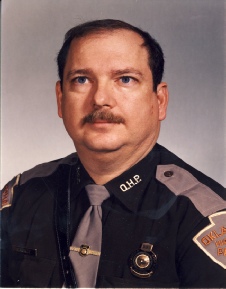
|
Duane Lee Grundy - State Trooper
Oklahoma Highway Patrol April 11, 1990
Shortly after 2 a.m. on Wednesday, April 11, 1990, State Trooper Duane Grundy, 40, was on the shoulder of the west-bound lanes of the Will Rogers Turnpike, nine miles north of Vinita issuing a citation for a burned out headlight to the driver of a van, which was towing another van. Trooper Duane Grundy’s patrol unit was parked behind the vans with the emergency lights on. Trooper Grundy was walking toward the back of the towed van to get a license plate number when he was struck by a passing 1975 Chevrolet pickup traveling at sixty miles an hour. Trooper Duane Grundy was knocked into the van and died instantly. The driver of the van used Trooper Grundy’s highway patrol unit radio to call for help. The driver of the pickup, James A. Grundy, 68, (no relation to the trooper) was charged with negligent homicide.
State Trooper Duane Grundy was survived by his wife, Deborah, daughter Joye, 18, and son Kevin, 10, and is buried in Glen Abby Memorial Gardens, Miami, Ottawa County, Oklahoma.
State Trooper Duane Grundy’s son Kevin later became a Springfield, Missouri police officer.
OLEM – 2N-2-23 NLEOM – 46E17
Updated June 15, 2024
.
|
|
|
|
|
|
Dick Guatney – City Marshal
Ochelta
Dick Guatney appears to have been engraved on the Oklahoma Peace Officers Memorial (Law Enforcement Memorial) in error. Notes of O. K. Bivins who gathered the information for the memorial when it was built in the late 1960’s indicate that Dick Guatney was the City Marshal of Ochelta in Washington County and was “found shot to death near the town’s watering trough” in 1913. However, no documentation has been found for his death.
OLEM – 1N-2-29
Updated June 15, 2024
|
|
|
|
|
|
Douglas Jackson Guy – Deputy Sheriff
Pittsburg County Sheriff’s Office
Deputy Sheriff Douglas Guy was stationed in Kiowa and apparently lost his life in a personal domestic situation.
On the morning of Wednesday, August 22, 1934, Deputy Sheriff Douglas Guy, 46, went to the residence of Richard Buffington, 33, about seven miles south of McAlester. Mrs. Buffington, 22, had recently gone back to her husband Richard after a period of separation. During the separation, Mrs. Buffington and Deputy Sheriff Douglas Guy had been “keeping company”. That Wednesday morning, Deputy Sheriff Guy met Richard Buffington outside their house and Deputy Sheriff Guy asked to speak to Mrs. Buffington. When Richard Buffington turned his back to go in the house to get Mrs. Buffington Deputy Sheriff Douglas Guy stuck his gun in Buffington’s back. Richard Buffington was able to disarm Deputy Sheriff Guy. Guy then left threatening to return. That evening Richard Buffington took the deputy’s gun to the County Attorney and advised him of the situation.
Richard Buffington was afraid for his life and loaded a shotgun with Number Four buckshot and stayed up all night. In the early morning hours of Thursday, August 23rd Deputy Sheriff Guy ordered T. A. Derryberry to assist him in making an arrest. The two men hid themselves near the Buffington residence and about dawn they approached the house. When Deputy Sheriff Douglas Guy saw Richard Buffington Deputy Guy fired on Buffington missing him. Richard Buffington returned fire with the shotgun and fatally wounded Deputy Sheriff Guy.
Richard Buffington surrendered himself to the Sheriff but was released without any charges being filed the next day.
Deputy Sheriff Douglas Guy is buried in Kiowa City Cemetery, Kiowa, Pittsburg County, Oklahoma and was survived by his widow Ida and three grown children.
OLEM – 8S-4-14
Updated June 15, 2024
|
|
|
|
|
|
James H. Guy – Deputy U. S. Marshal / Sergeant
U.S. Marshal Service / U. S. Indian Police May 1, 1885
Joe Henderson leased land in the Chickasaw Nation. On Wednesday, March 18, 1885, he found that two of his horses had been stolen and he believed he knew the thieves. Joe Henderson traveled to Fort Smith, Arkansas to report the theft of the horses. Arrest warrants were issued for two brothers, Jim, and Tom “Pink” Lee. The warrant was turned over to Deputy U. S. Marshal James H. Guy, who also was a Sergeant with the U.S. Indian Police.
A murder warrant had also been issued for a black man named Dallas Humby and Deputy Marshal James Guy had information that Humby might also be at the Lee ranch. Dallas Humby was accused of killing his wife and had avoided apprehension earlier. Deputy Marshal Guy was anxious to make the arrest.
On Friday, May 1, 1885, Deputy Marshal James Guy gathered a posse of thirteen men, including William “Bill” Kirksey and brothers James L. “Jim” and Andrew C. “Andy” Roff. The posse proceeded to the Lee ranch near Dresden (now Gene Autry) a small-town northeast of Ardmore.
After dismounting, the officers surrounded the Lee home. Deputy U.S. Marshal Guy called out for the Lee’s to come out of the house to answer warrants. Someone inside the house asked who it was and for them to come to the front of the house where they could talk. Deputy Marshal James Guy walked to the front of the house and stood by a tree.
The posse was immediately met by gunfire coming from within the house. Deputy Marshal James Guy was struck by two bullets and died during his fall to the ground. The posse members returned fire and a shootout ensued. Posse Andy Roff was struck by five bullets and his brother Jim Roff, once. As the gunfight increased, Posse Bill Kirksey also fell from shotgun fire. All three posse died within minutes and the remainder of the posse grabbed their horses and retreated.
The posse reported the killings to the Sheriff in Sherman, Texas who notified the U.S. Indian Police and the U.S. Marshal. A posse of Deputy U.S. Marshals, Indian Police and Sheriff’s deputies started for the Lee Ranch. The posse found only the house burned and the bodies of the four murdered federal officers.
Not until Monday, September 7, 1885, when Deputy U.S. Marshals Heck Thomas, Jim Taylor and Jim Shattel were in the Gainesville, Texas area were the Lee brothers brought down. The Lee brothers were spotted trying to cut their way through a fence. The lawmen crept to within forty or fifty yards and called out to the Lees. Both Jim and Pink started firing at the posse with rifles. The lawmen returned fire until both Lee brothers were dead.
The other men were later arrested and acquitted at their trials.
The burial site of Deputy U.S. Marshal James Guy is unknown. His three posse are buried in Hibbit Cemetery, Sturgeon, Cooke County, Texas.
OLEM – 5N-1-19 NLEOM – 62W4
Updated April 22, 2024
|
|
|
|





